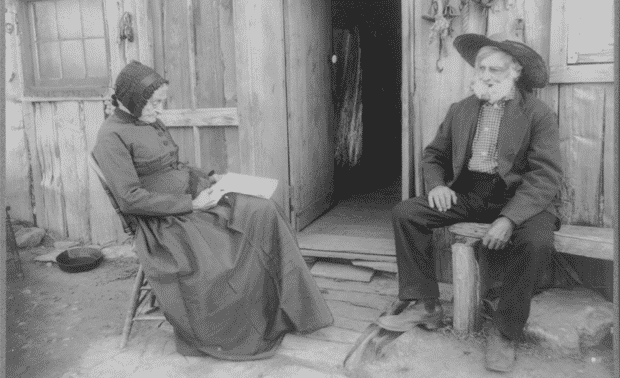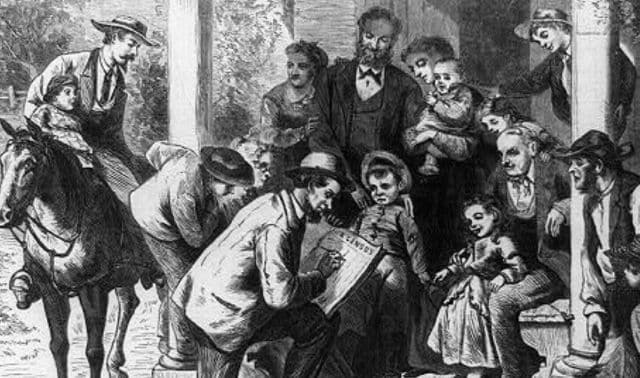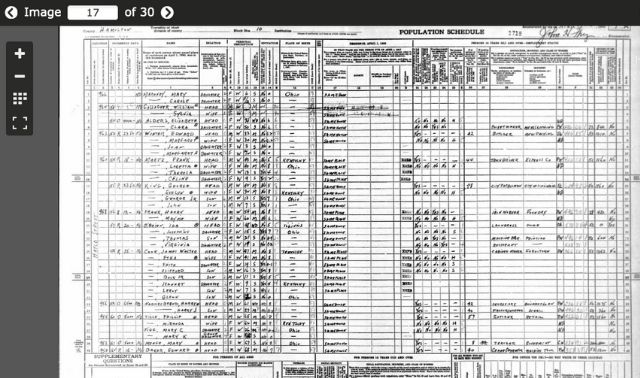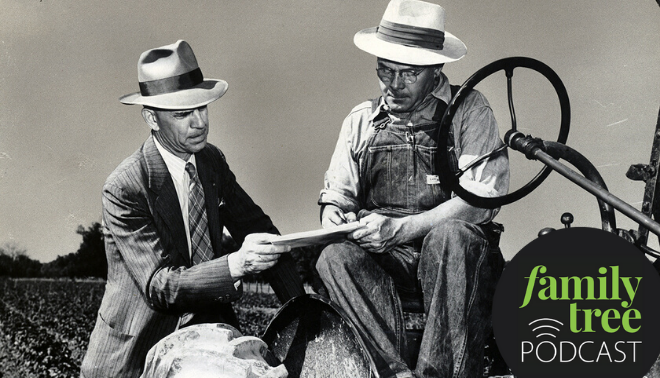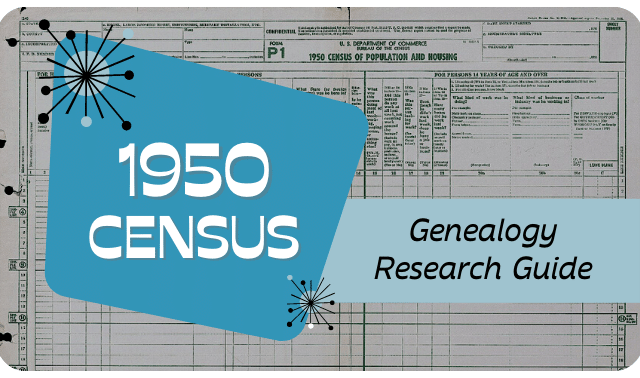Sign up for the Family Tree Newsletter Plus, you’ll receive our 10 Essential Genealogy Research Forms PDF as a special thank you!
Get Your Free Genealogy Forms
"*" indicates required fields
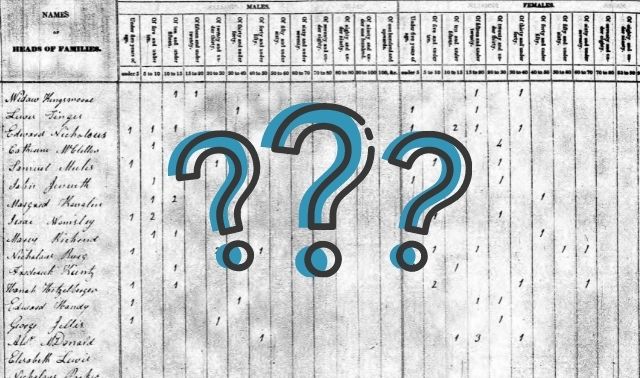
Written by Maureen Taylor, unless otherwise noted
Most genealogists, working backward through family lines, tense up when they reach the 1840 census. Brows crease. Heartbeats quicken. Palms feel clammy. Why? Because most names have disappeared. On this and earlier federal enumerations, entire households are reduced to tick marks or numbers in columns labeled with age ranges, sex and race (free white, slave or free “colored”). Only the head of the household—usually a man—is referred to by name. This, of course, severely hampers your ability to pick your family out of the hundreds or thousands of similarly named folks: There are no names and clearly indicated ages of a wife or children to confirm that this, indeed, is the John Henderson household you’ve been looking for. And if it’s the wife or a child you’re trying to locate—well, you’ve got a hill to climb.
What’s a genealogist to do? First, take a deep breath and let it out. Slowly. Sure, those pre-1850 censuses are more difficult to figure out than their later counterparts, but they’re far from impossible. With our strategies, you can milk those tick marks to find your ancestors in early censuses.
1. Profile your family.
The cardinal rule of genealogy is to work backward in time, and this strategy is essential when making the leap from the 1850 to the 1840 census, then 1830, and so on. You’ll translate 1850 census data on your family into the tick-mark “language” of the 1840 census, creating a profile you can compare to households that show up in your census search results. Here’s how:
First, you’ll need the 1850 and 1840 census worksheets. Once you’ve found your ancestors in the 1850 census, copy the names, ages and other information into the 1850 worksheet. Write the head of the household on the 1840 form. Next, subtract 10 from each household member’s age in 1850, including the head of the household, and mark the appropriate category in 1840. Use the same process to leap from the 1840 to 1830 census. You’ll find an example of how I did this for my Samuel Stockwell family here:
Estimating how your family looked during early, head-of-household-only censuses is essential to finding their record. Here’s how I profiled my Samuel Stockwell family for my 1840 census search.
- First, I identified my family in the 1850 census: Samuel Stockwell, age 50, and his wife Content, 46, live in Monroe, Franklin County, Mass. Their children Emery, 17, and Sarah, 14, were born in Vermont. Their other children, Mary, 11, Lucy, 9, and Ellen, 7, were born in Massachusetts.
- I filled out an 1840 census tracker, subtracting 10 years from each person’s age (Ellen and Lucy weren’t yet born). I estimated the household to look like this:
– free white males 5 and under 10: one (Emery)
– free white males 40 and under 50: one (Samuel)
– free white females under 5: two (Mary and Sarah)
– free white females 40 and under 50: one (Content)
3. I started my census search. Because Mary was born in Massachusetts about 1839, I looked for the family there in 1840. I found a Samuel Stockwell household in Monroe that looked promising, but it did have some discrepancies. Here’s what the return shows:
– free white males 5 and under 10: two
– free white males 10 and under 15: one
– free white males 40 and under 50: one
– free white females under 5: two
– free white female 15 and under 20: one
– free white females 30 and under 39: one
The total number of family members in this listing is eight—six children and two adults. There’s an extra 5-to-9 year-old-boy, 10-to-14 year-old boy and 15-to-20 year-old girl.
Despite the extra individuals, I won’t automatically throw the match out the window: The family could have taken in nieces and nephews, or a child alive in 1940 might have succumbed to illness before 1850. An older offspring could have married and left home. I need to do some further digging into town and vital records for this Stockwell family in search of the identities of the other members of this household.
The census also indicates one of the eight is “insane or idiot at private charge.” It wasn’t necessarily a family member: In New England at the time, towns would pay families to take care of individuals in need of help.
Age/gender/race categories used in each pre-1850 census
The age and gender categories used in early censuses got more detailed as time went on. Average life expectancy was 35 in 1790, and the government was most interested in voters and men of military service age, so censuses didn’t need many categories. But by 1830, Uncle Sam was counting centenarians.
When profiling your families for pre-1850 census searches, sort them into these categories (Note that the 1820 census double-counted some young men: It had categories for men ages 16 to 18 and ages 16 to 26.):
1790
- free white males of 16 and upwards, including heads of families
- free white males under 16
- free white females including heads of families
- all other free persons
- slaves
1800 and 1810
These censuses had categories for both free white males and free white females in these age ranges: under 10, 10 through 15, 16 through 25, 26 through 44, and 45 and over. Separate columns count all other free persons and slaves, with no age or gender breakdowns.
1820
For free white males and females, the 1820 census kept the same categories as in 1810, except for an added column breaking out free whites ages 16 to 18 (who were double-counted under those age 16 to 26).
Male and female slaves and free persons were counted in categories for those under 14, of 14 and under 26, of 26 and under 45, and 45 and upwards. A final column tallied “all other persons except Indians not taxed.”
1830 and 1840
For both free white males and free white females, age categories are: under 5, 5 and under 10, 10 and under 15, 15 and under 20, and every 10 years to those “100 and upwards.” Both “free colored” and enslaved males and females are counted in columns for those under 10, 10 and under 24, 24 and under 36, 36 and under 55, 55 and under 100, and 100 and upwards.
Be somewhat flexible about how your family profile fits matches to your census search. A number of circumstances can change how your family looks from census to census: Family members might die or children grow up and move out, boarders or relatives might move in, and ages might be recorded incorrectly (more on this next). You may need to save several prospective matches and weed some out as you do more research.
2. Be age-conscious.
Your profile might not exactly match the census, even if it’s the right family. That’s especially true for ages. Our ancestors weren’t as age-conscious as we are. Sometimes an ancestor’s age category from census to census will have stayed the same—or advanced 20 years—because he wasn’t sure of his exact year of birth. Pick out households that closely fit your family’s demographics, then eliminate them one by one as your continued genealogical research in other records rules them out.
Keep the census day in mind when calculating ages for your profile. It took months for enumerators to visit households. To keep things consistent, an official census day was established for each enumeration. All ages were to be recorded as of that day. Of course, enumerators occasionally deviated from this directive, but in general, a child born after the census day won’t be recorded in that census, even if he was two months old by the time the census taker made it to his parents’ home.
In 1790, the census day was Aug. 2; in 1800, Aug. 4; in 1810, Aug. 6; 1820, Aug. 7; and 1830 and 1840, June 1. See our list of all the official census days.
3. Search smart.
If you can, search pre-1850 census records on Ancestry.com, where the search forms for each census are customized to match the categories in that census. For example, you can go to the 1820 census search form, enter the head-of-household’s name and where you think the family lived, then type in the numbers of “Free White Persons Under 16,” “Free White Persons of 16 and under 25,” “Free White Persons Over 25,” “Total Slaves,” and so forth in the household. Remember to include the head of the household in the numbers.
To find the search form for the census year you need, go to search.ancestry.com/search/group/usfedcen, scroll down to the list of Included Data Collections and choose a census. If you don’t have an Ancestry.com subscription, see if your public library offers Ancestry Library Edition to patrons.
Early census records are on other websites, but without that helpful category search. HeritageQuest Online, available free through subscribing libraries and archives (check your library’s website or ask at the reference desk to see if it subscribes), also offers pre-1850 enumerations. Of the early censuses here, only 1790 to 1820 are indexed. For the 1830 and 1840 counts, use the site’s Browse feature to navigate to your ancestor’s county of residence, then view the schedules page by page as you would microfilm. This works best with smaller communities rather than large cities.
FamilySearch.org has indexes to censuses from 1790 to 1840. You can view the head-of-household’s name and place of residence. The index links to the records on Ancestry.com, where you must be a subscriber to view them. (Try your search at a library that offers the free Ancestry Library Edition.)
4. Check name variants.
Just as you would for later censuses, search for variations of your ancestor’s name. A Joseph Henry might have gone by Henry or J.H., so check middle names and initials. The census taker or an indexer could have misinterpreted the name, leading to some strange spellings. In Ancestry.com’s 1830 census collection, Agrippa Hull of Stockbridge, Mass., was indexed as Whippy Heel. If you find such a transcription an error on Ancestry.com, you can click on “annotate this record” and add the correction. The correction will become searchable as an alternate transcription for the record, making the record easier for other researchers to find.
5. Understand boundary changes.
You may find your ancestor living in an unexpected place, too. During the half-century from 1790 to 1849, territories became states and new counties were born. For instance, in 1820, Maine separated from Massachusetts to become its own state. As geographic boundaries changed, your ancestors’ state, county or city of residence could be different from census to census, even though they didn’t move.
You can trace these geographical changes using the Newberry Library’s Atlas of Historical County Boundaries. If you don’t find your ancestor by searching in his usual place of residence, try broadening your search to a neighboring county or state—or altogether eliminating a place from your search terms.
6. Put it in historical context.
Constant pushing toward an ever-changing frontier characterized the time period covered by the head-of-household censuses. That means you’ll find families moving through multiple states, census by census. You’ll also discover families listed in multiple counties in the same state —even if they never moved. That’s because state governments created new counties and subdivided old ones as population surged into new areas. Finding an ancestor in a new county doesn’t necessarily mean he moved. Is the township name the same? Then your ancestor likely had the same residence he did 10 years before. Of course, townships splintered during this time period, too, so the township name could have changed. It’s common for different counties in a state to have townships bearing the same name—especially presidential ones such as Washington, Jefferson and Jackson. Every county seems to have one of those.
The Peter Daub family, enumerated in the 1820 census at their home in Jackson Township, Lebanon County, Pa., illustrates this concept. The family didn’t move between 1800 and 1820, but the 1800 census entry—found under the variant spelling Peter Toup—lists their residence as Heidelberg Township, Dauphin County, Pa. Both the county and the township changed in those 20 years between censuses (I haven’t found Peter in the 1810 census).
Almost all heads of household listed in the census were men. The few women listed as heads of household tended to be widows with property. In many cases, they’re listed simply as “Widow Peters” or “Widow Smith.” Younger widows, especially those with young children, typically remarried and remained anonymous tick marks on the census.
James M. Beidler
7. Take extra steps with female ancestors.
If you’re searching for a woman, you might have a hard time: Unless she was the head of a household—say, she was widowed and lived on her own—she won’t be enumerated by name. Make a list of all the men in her life at the time and run searches for them: father, husband, sons, sons-in-law, brother, brothers-in-law, neighbors.
8. Make copies of early censuses easier to read.
In these early censuses, it’s easy to misread the tick marks in the columns. Until 1830, enumerators had no standardized forms. Instead, they would create their own. These handwritten sheets might lack lines dividing the rows of families, so the enumerator’s markings could appear to belong with a family above or below yours. Try printing the return and penciling in your own dividing lines between rows of tick marks. Once you figure out which row is your family’s, mark it with a highlighter. Not all of the pre-1850 censuses include column titles, either—another reason our downloadable census forms are handy.
9. Check the page before and the page after.
It’s always a good idea to check at least one page previous and one page ahead of the census return listing your family so you can survey the people in the neighborhood. Households weren’t necessarily located in the order they’re listed—the enumerator might have gone back and forth across a street or up one side and down the other, or later gone back to houses where no one answered the first time. In some locations during the 1790 census, local residents came to the enumerator in a central location.
All this means your ancestors’ next-door neighbors—who may be family, too—could be listed on a different census page. Even if they’re not related, the names of neighbors can provide you with research clues during a time when social activity was usually limited to those who lived nearby. Because neighbors often served together in the military and vouched for each other in court documents, those names will help you identify your folks in probate, military and court records. And your kin might be named in records the neighbors left behind.
10. Find census substitutes.
Early technologies and hard-to-cover terrain have led to gaps in early census records. For example, the 1790 census schedules for Delaware, Georgia, Kentucky and New Jersey are missing. Virigina’s 1800 census is lost and 1810 records are missing for 18 counties. The 1800 census for Tennessee is lost, too.
In some cases, genealogists have “re-created” missing census records using state enumerations and tax records. One example is the 1790 and 1800 census reconstructions, created from tax lists, at Binns Genealogy. Also look for books such as The Reconstructed 1790 Census of Georgia: Substitutes for Georgia’s Lost 1790 by Marie De Lamar and Eisabeth Rothstein (Clearfield). Run a web search on the place and census substitute to find websites and books with these records. (See more information below.)
11. Use these other records to confirm hunches and discover new leads.
By now, you know that head-of-household censuses say frustratingly little about our ancestors. Still, they can be powerful tools when you use them in tandem with other records. How? Turn to these four common record types to start replacing those tick marks with names. Just remember: In genealogy, redundancy is a good thing. Try to find at least two records to confirm any hunches.
Tax lists: Our ancestors paid taxes every year, and many of the resulting records have survived. Tax lists typically note the amount of property a person owned along with a description of that property—animals, carriages and so on. Because these lists were prepared annually, they can tell you when individuals moved in between censuses. In some cases, tax lists even show where an individual went after leaving a particular township or county.
Vital records: Your best bets for getting information about late-1700s and early-1800s births, marriages and deaths (which predate statewide registration) are often church congregational registers. That is, unless you’re blessed with New England ancestors, in which case town registers of births, marriages and deaths will be a big help. In any event, vital records should give birth dates, letting you attach names to those tick marks. In the case of Peter Daub’s family, I found that the birth dates listed in the baptism records of Peter’s children, as well as some of their burial records, matched the age-range groups in the census. This was important, since three different Peter Daubs lived in Lebanon County at the time.
Estate records: Many (but not all) people name their children in their wills, often in birth order. Compare that information with a census schedule for the corresponding family. Are all the children accounted for? Of course, sometimes it’s better if an ancestor died without a will: In that case—assuming there was an estate worth splitting—one of his children would have filed a petition naming all of the deceased person’s offspring. Wills and other estate records can help you learn the elusive first name of “Widow Smith,” as well.
Land documents: Remember how I said you can’t always assume the people listed above and below your ancestors are neighbors? Well, records of land sales can reveal the real people next door. Registers of deeds contain descriptions of property being sold, including the names of people who owned land on all sides of a property.
James M. Beidler
12. Look for bonus clues.
Pre-1850 censuses are short on the details we appreciate in later enumerations, but they do contain clues, including:
- In the 1820 census, enumerators noted how many in a household were engaged in occupations involving agriculture, manufacturing and commerce.
- In 1820 and 1830, a column tells you how many in the household were “foreigners not naturalized.”
- The government began collecting social statistics with the 1830 census. You’ll see whether any white members of a household were blind or deaf and “dumb.”
- The 1840 census adds “insane” and “idiotic” to the above categories.
- Students in a household were counted in 1840, as were white males over age 21 who couldn’t read and write.
- More employment data came with the 1840 census, when enumerators counted those in mining; agriculture; commerce; manufacturing and trade; ocean navigation; canal, lake and river navigation; or the “learned professions.”
- The 1840 census lists names and ages of people collecting military pensions, even if they weren’t head of a household.
13. Guess at relationships, but don’t make assumptions.
The names appearing close to your ancestors’ on pre-1850 censuses might signify neighbors—or they might not. Some schedules alphabetized the residents within a township or county. The names on unalphabetized lists might be worth looking into, but don’t assume they’re neighbors. Many census takers formed loops through their designated areas, which means they might not have gone to adjacent houses in the order you think they would have.
Although you can hypothesize relationships based on the census age ranges, remember your hypotheses could be false. Some households contained orphaned nephews, nieces and cousins; parents and fathers-and mothers-in-law; aunts and uncles; siblings and siblings-in-law; live-in servants; and hired day laborers who happened to be working on census day.
Take, for example, William Dill, enumerated in 1810 at his residence in Dover, Kent County, Del. His household comprised a male age 26 to 45, a male under 10, two females 26 to 45, one female 16 to 26 and two females under 10. The family could consist of William, his wife, a sister-in-law, an older daughter and three young children. Or William could be a father with two widowed daughters and four grandchildren. The possibilities are endless—but you can narrow them by consulting other records in conjunction with the census.
James M. Beidler
Don’t be intimidated by those pre-1850 censuses. Just take a deep breath, roll up your sleeves and start employing these 10 strategies. You may need a little more elbow grease, but finding your family will be worth the extra effort.
Constructing a “Shadow Census”
If you need help translating those tick marks into real relatives, try constructing a “shadow census.” Here’s how:
Once you find a pre-1850 census enumeration for your family, create a chart with three columns. In the first column, write down the gender and age group of every person in the household, from oldest to youngest. Then calculate the likely birth year for each person; put those dates in the second column. Finally, use the third column to fill in any names and dates you’ve gleaned from other records that seem to fit the census entries. Below, I’ve charted the household of Peter Daub, enumerated in the 1820 census.
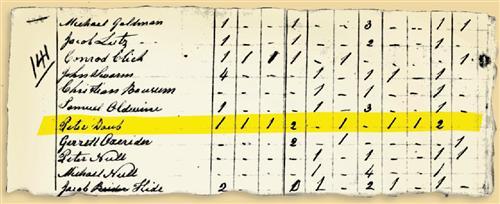
| Census Entries | Estimated Birth Years | Possible People |
|---|---|---|
| male age 45+ | born by 1775 | Peter Daub, born about 1770 |
| female 26-45 | 1775-1794 | Magdalena (wife) |
| female 26-45 | 1775-1794 (sister-in-law) 1771 | ? Anna Maria Noll |
| male 16-26 | 1794-1804 | John (son), born 1797 |
| male 16-26 | 1794-1804 | Peter (son), born 1800 |
| female 16-26 | 1794-1804 | ? Magdalena (daughter-in-law) |
| male 16-18 | 1802-1804 | Johann Jacob (son), born 1805 |
| male 10-16 | 1804-1810 | Nicholas (son), born 1807 |
| female 10-16 | 1804-1810 (daughter) 1809 | Maria Magadalena |
| male under 10 | after 1810 | Johann Henrich (son), born 1813 |
Just as likely as not, you’ll find some “extra” people in the household. Use the genders and birth-year ranges of these individuals as clues to expand your search to extended family. From other records, I learned that head of household Peter Daub eventually became the administrator of his sister-in-law Anna Maria Noll’s estate. Anna Maria may have been widowed and moved in with her extended family. Son Peter Daub and his wife, Magdalena, were married in 1819; the newlyweds could have been living with his parents in 1820.
James M. Beidler
Tip: Early censuses often took months to complete, increasing your ancestors’ chances of being double-counted. Vermont’s 1790 census, for example, wasn’t taken until 1791; several families who moved to the state from elsewhere were counted twice: once in the first location and once in Vermont.
Versions of this information appeared in the May/June 2012 (Taylor) and January 2006 (Beidler) issues of Family Tree Magazine.
Related Reads
FamilyTreeMagazine.com is a participant in the Amazon Associates Program, an affiliate advertising program. It provides a means for this site to earn advertising fees, by advertising and linking to Amazon and affiliated websites.
ADVERTISEMENT



